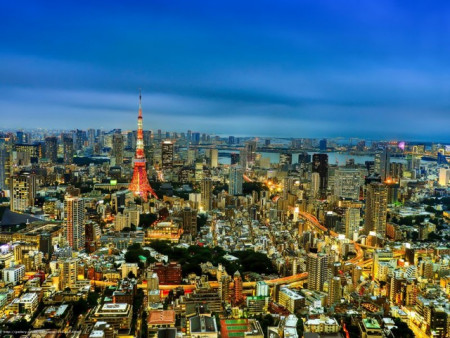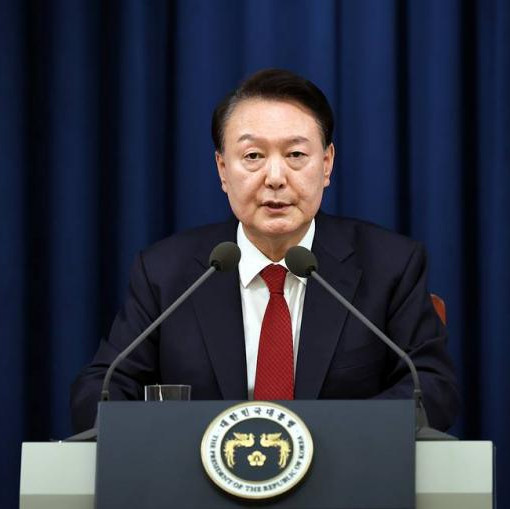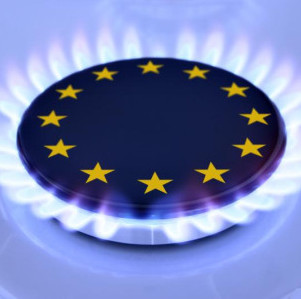
On March 31, the Japanese Cabinet of Ministers published forecasts on the number of deaths and destruction following an expected 9-magnitude mega-earthquake in the Nankai Trough off the Pacific coast of Japan. Its aftermath might destroy Japan's economy and cause a global economic crisis. Among facilities affected would be also military ones belonging to both Japan and the United States, located on the Pacific coast to deter China and Russia.
Present-day estimates suggest that a potentially devastating earthquake with an 80 percent probability within the next 30 years would kill approximately 298,000 people and destroy 2.35 million buildings. Compare: the death toll after Japan’s largest earthquake and tsunami in March 2011 amounted to 19,747 people, and 2,556 have been missing since.
In case of alert, 670,000 people would need evacuation, a study by the Asahi Shimbun newspaper revealed.
Using the latest data on soils and topography of potentially affected regions, the Commission took into account earthquake intensity, tsunami height, and potential flooding areas. Current estimates show that 764 municipalities in Tokyo and 30 prefectures from Fukushima to Okinawa are at risk of an at least 6- magnitude quake, as well as three-plus-meter-high tsunamies.
A tsunami up to 34 meters high might hit the cities of Kuroshio and Tosashimizu in Kochi Prefecture. 30cm flooding with a threat to human lives would occur on a total area of approximately 1,151.5 square kilometers from Fukushima to Okinawa Prefectures.
Forecasts for an eruption of Japan's largest volcano, Fuji, located 120 kilometers southeast of the Japanese capital, do not make feel any better. Over the past 5,600 years, it has erupted some 180 times. The latest major incident that affected the territory of modern Tokyo occurred in 1707.
In case of another eruption of the kind, all those living throughout the area from the volcano to Tokyo should get evacuated, claims another group of experts created by the Cabinet of Ministers. Meanwhile, 38 million people live in so-called Greater Tokyo — almost a third of the country’s total population.
At least 30 centimeters of ash would cover the area. Power supply, transportation, and communications would be severely hampered. Ash accumulating on the roads could disrupt transport links and prevent delivery of goods.
Some estimates show that a major Fuji eruption would produce about 490 million cubic meters of ash. Yosuke Miyagi, a researcher with the Volcanic Disaster Research Department at the National Research Institute for Earth Sciences and Disaster Resilience, noted that volcanic ash is fine and light, easily carried by the wind over long distances. At the same time, "the ash is hard and sharp because it contains glass particles. If you try to clean the windshield of a car with wipers, it might get damaged," he said. "Also, ash could damage the cornea if it gets into your eyes." And inhaling ash would damage your lungs.
When mixed with moisture, the ash becomes sticky, and even 10 cm of precipitation could disable even four-wheel drive cars. Railways are particularly vulnerable because even a few millimeters of ash on the tracks would stop traffic and public transport in the Greater Tokyo area.
The power supply might also be disrupted if volcanic ash enters the filters of thermal power plants. Blackouts could occur if ash mixed with moisture accumulates on power lines or poles.
Meanwhile, according to generalized estimates, some 60-70 percent of Japan's GDP is produced on the Pacific coast. The Greater Tokyo Area (Kanto) alone, which includes Tokyo, Yokohama, Kawasaki and other cities, accounts for approximately 30-35 percent of the country's GDP. For the Chūbu economic region (Nagoya, Shizuoka), it is 10 to 12 percent. Both of these areas would be part of the disaster zone if there comes a mega-earthquake.
Consequences of the mentioned disasters could be enormous for the country's economy, given that the earthquake, tsunami and destruction of three reactors of NPP Fukushima—1 in Fukushima Prefecture, remote from the country's economic centers, caused damage of $235-300bn, as per government-provided estimates. And the cost of curing effects of an NPP accident in the coming decades would amount to at least $200bn.
At the same time, global GDP grew more slowly in 2011 due to logistic chain disruptions caused by paralysis in the supply of cars and components, as well as shortages of Japanese-made microelectronics and components. Japan's recovery required huge government spending, entailing an increase in its public debt and a weaker economy. And yet, assessing all the consequences of a potential disaster is next to impossible. One thing is clear — they would surpass the tragedy of 2011 by a factor of several times.
There is only one relatively good news here — not a single nuclear power plant is operating in the potential disaster area. All of them were halted after the 2011 accident at Fukushima. However, there are still nuclear reactors there, namely three ones at the Hamaoka NPP in Shizuoka Prefecture, 4 ones at Fukushima—2, and one at Tokai—2 NPP in Ibaraki.
On the bright side, the military bases do function day and night.
Key US and Japanese military facilities are that directly affect the military and political situation in the Indo-Pacific region located in the potentially endangered area.
The Americans have the Yokosuka base, serving as headquarters of the US Navy's 7th Fleet and the parking lot for the USS Ronald Reagan aircraft carrier; Atsugi Base, the largest US Navy air base in Japan utilized to support the fleet and aviation; Kadena in Okinawa, US largest Air Force base in Asia; Camp Zama, the headquarters of the US Army In Japan; Iwakuni Base in Kanagawa Prefecture, a base for the United States Marine Corps used to accommodate F-35B fighter jets among other things; and a number of others.
Yokosuka hosts a Japanese naval base, headquarters of the Japan Maritime Self-Defense Forces; Ibaraki Prefecture has the Hyakuri Air Base, a major air base of the Japan Air Self-Defense Forces; and Komaki Air Base near Nagoya.
All these facilities let Japan and the United States monitor things in the Western Pacific Ocean and the East China Sea, while also providing air and sea patrols near Taiwan and the South China Sea.
There is little doubt that non-strategic nuclear weapons are being imported to a number of American bases, although the two sides do have several truly ambiguous agreements that allow denying their transfer to Japan.
Paradoxically, the threat to safety of American bases, in Japan’s view, might lead to their liquidation and withdrawal or drastic reduction of American troops. This is the exact reason why Japanese politicians had a bad time during the Fukushima disaster, when radioactive contamination could also affect American military facilities. The USS Ronald Reagan’s hasty withdrawal from the disaster zone has not been forgotten there.
Apparently, it is not for nothing that one of Japanese Prime Minister Shigeru Ishiba’s program goals is to kick up the country's disaster management capabilities. But these apocalyptic predictions had better not come true altogether.









